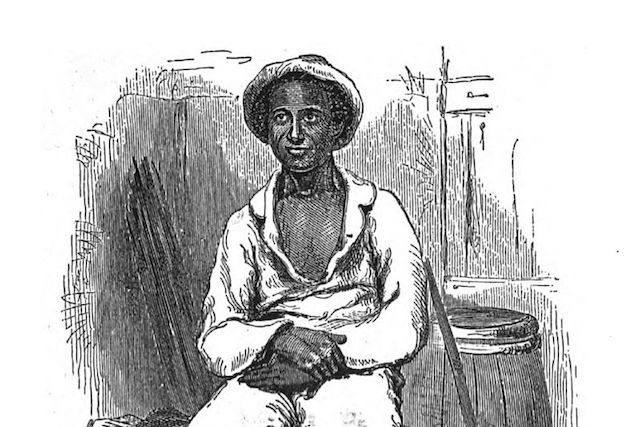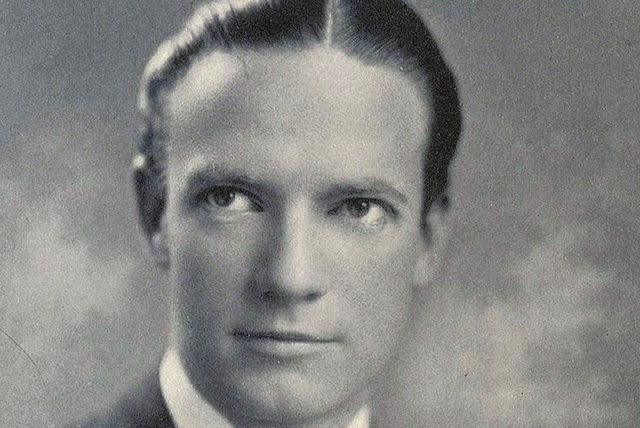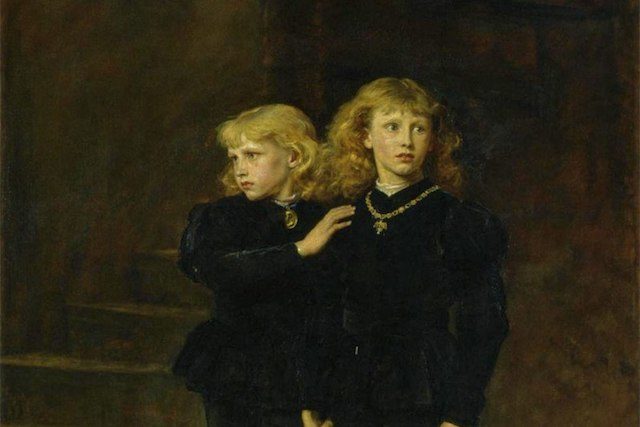There are countless people who simply vanished from the pages of history. Some disappearances, like that of Amelia Earhart or D.B. Cooper, are still entrenched within the public mind, but others have slowly begun to fade away.
10. Everett Ruess
https://www.youtube.com/watch?v=Iq4vk216b9Q
Everett Ruess was an early 20th century artist and diarist who primarily found success as a printmaker. A professional nomad, he would set out to explore the deserts of the American Southwest and be gone for months at a time. In 1934, the 20-year-old wanderer walked alone into the Utah wilderness and was never heard from again.
Ruess was last seen on November 21. He stopped by the tiny settlement of Escalante to pick up mail from his parents. It is assumed he met his end in the nearby Davis Gulch, although how is still a bone of contention. Most likely scenario is an accidental death, perhaps by slipping and falling off a cliff. Of course, he could have committed suicide or could have been killed. Or, perhaps, he didn’t die at all and simply left civilization behind to start a new life in the badlands he loved so much.
The story of Everett Ruess sparked a new development 75 years after his disappearance. In 2009, the remains of a man were found in Comb Ridge, about 50 miles east of Davis Gulch, and DNA tests suggested they belonged to the vanished artist. However, the initial findings were later dismissed after a state-of-the-art military lab proved that the bones belonged to a Native American man. The ultimate fate of Everett Ruess remains a mystery.
9. Victor Grayson

In 1922, British Prime Minister David Lloyd George caused a corruption scandal when it emerged that he sold honors and titles through a middleman and fixer named Maundy Gregory. This led to the Honours (Prevention of Abuses) Act of 1925. But a few years prior to this, a politician named Victor Grayson threatened to expose the corruption and vanished soon after.
Grayson was a skilled orator and a firebrand who became a Member of Parliament for Colne Valley in 1907 after a shocking election win as an independent candidate for the Labour Party. He lost his seat in 1910 and suffered a fall from grace, but by the end of the decade he was ready to mount a comeback.
His career revival came to an abrupt end as Grayson disappeared on September 28, 1920. Some reports say that he was last seen leaving his home with two men. The outspoken politician had recently made some powerful enemies as he denounced the prime minister and accused him in public of being involved in the honors scandal. Grayson claimed that the whole thing could be traced to a “monocled dandy with offices in Whitehall” and promised to name him soon.
Shortly after his public threat, the former MP was attacked and beaten in the Strand. And after that he disappeared. There has never been any evidence connecting the events together, although many have speculated that Grayson had been assassinated on Gregory’s orders, him being the aforementioned dandy.
8. Ludwig Leichhardt

In 1957, Patrick White wrote his seminal novel Voss, which later helped him become the first Australian to win the Nobel Prize for Literature. The book tells the story of a stubborn, megalomaniac German explorer who sets out to traverse the Australian continent. The character was based on Ludwig Leichhardt, a real Prussian naturalist who disappeared in the outback a hundred years prior.
Leichhardt arrived in Australia in 1842. He was keen to study this new natural world so he organized several dangerous expeditions. The first two weren’t incredibly successful, but at least Leichhardt walked away from them in one piece. The close calls didn’t deter him and, in 1848, he embarked on his most ambitious trek yet: a 2,800-mile journey east-to-west across the uncharted Australian interior.
The naturalist set out in March with a seven-man team, dozens of pack animals, and piles of gear. He was last seen on April 3 at McPherson’s Station, on the Darling Downs.
As to what happened to him, theories are plentiful. Some say the entire expedition perished, either by drowning, murder, or starvation. Others believe there was a mutiny and Leichhardt was left to fend for himself. And some believe the naturalist renounced civilization and spent the rest of his days with an Aboriginal tribe.
Despite the size of Leichhardt’s expedition, not a single remnant was recovered except for one small relic. In 1900, an Aboriginal man found a nameplate with the inscription “LUDWIG LEICHHARDT 1848” attached to a burnt gun stuck in a boab tree with the initial L carved into it.
7. Charles Kingsford Smith

Staying in Australia, we examine the 1935 disappearance of Sir Charles Kingsford Smith. His case draws a lot of comparisons to that of Amelia Earhart. A pioneering aviator, Smith recorded the first non-stop flight over the Australian mainland and the first trans-Pacific flight from the United States to Australia.
In 1935, he and his co-pilot Tommy Pethybridge jumped aboard the Lady Southern Cross in an attempt to break the record for fastest flight between England and Australia. The plane vanished on November 8, 1935, somewhere over the Andaman Sea. After 18 months, a wheel and undercarriage leg washed up on a Burmese island and were later confirmed to have belonged to the Lady Southern Cross.
In recent years, a filmmaker claimed to have found the sunken plane through sonar imaging, but the claim has been met with skepticism by several experts on the subject, including Kingsford Smith’s biographer, Ian Mackersey. For now, at least, the final resting place of the two Australian pilots remains a mystery.
6. Oscar Zeta Acosta
Oscar “Zeta” Acosta was a lawyer and author who played a prominent role in the Chicano Movement of the 1960s. He is best remembered as the friend of Hunter S. Thompson, particularly due to one memorable trip that later turned into the novel Fear and Loathing in Las Vegas. Acosta might have been depicted as a 300-pound Samoan named Dr. Gonzo, but he insisted on having his picture and name on the dust jacket. He disappeared in 1974 while on a trip in Mexico.
Oscar Acosta was unlike other civil rights leaders of his time. While they were diplomatic and patient, Acosta was angry and unreasonable or a “wild boy,” as Thompson described him. He indulged in heavy drug and alcohol use and displayed erratic behavior such as showing up to trials barefoot and even setting a judge’s lawn on fire.
In other words, Acosta was the type of man who made enemies pretty easy. Therefore, when he vanished while traveling in Mazatlán, those close to him assumed that he was murdered, perhaps in a drug deal gone wrong. Three years later, Thompson conducted his own investigation into his disappearance and published it in Rolling Stone under the title The Banshee Screams for Buffalo Meat.
5. Andrew Carnegie Whitfield

Steel magnate Andrew Carnegie was one of the richest men in American history. His wealth was estimated at around $372 billion in modern currency. Of course, his life was not all roses. His reputation was tarnished by his involvement in the Homestead Strike and the Johnstown Flood. And his nephew vanished mysteriously in 1938, never to be heard from again.
On the morning of April 17, Andrew Carnegie “A.C.” Whitfield boarded his Taylor Cub monoplane. He had planned to make a short 15-minute flight from Long Island to Brentwood, New York, but he never arrived at his destination.
Whitfield was still some hours short of his commercial pilot’s license so people initially thought he crashed due to inexperience. However, his journey only covered 15 miles and no signs were found of an airplane wreckage. Even more bizarrely, the 28-year-old aviator had checked into a Long Island hotel that day under the alias Albert C. White but never checked out. In his room, investigators found his passport, engraved cuff links, and other personal belongings. There were also two $6,000 life insurance policies in his wife’s name as well as multiple stocks and bonds.
Phone records showed that Whitfield called his home after his disappearance and, according to a telephone operator, said to the person at the other end, “Well, I am going to carry out my plan.”
At the time, police opined that A.C. Whitfield committed suicide by flying into the Atlantic Ocean. However, no evidence was ever found to corroborate this hypothesis and his disappearance remains a mystery.
4. William Morgan

If you ever visit the historic Batavia Cemetery in New York state, you will see a statue placed on a tall pillar dedicated to William Morgan. In 1826, Morgan threatened to publish a tell-all book that would expose all the secrets of the Freemasons. He disappeared a few months later.
The inscription on the monument makes no mystery about what happened. It describes Morgan as a “martyr to the freedom of writing, printing and speaking the truth” who was abducted and murdered by Masons. Indeed, this is the most commonly accepted version of events, but it was never actually proven.
Morgan claimed to have been a Freemason himself, although this has never been established with certainty. Some sources say he did so to gain access to the lodge and learn its secrets for his book, while others believe that he genuinely wanted to be a member and only turned against the lodge when the Batavia chapter refused his participation.
Morgan’s book stirred up a lot of publicity and he managed to find a backer in the form of newspaper publisher David Cade Miller. However, he also started being harassed, usually by being arrested on trumped up charges. On one occasion, a group of men took him out of jail, put him into a carriage and Morgan was never seen again.
A few Masons served lenient sentences for kidnapping, but none for murder. The most obvious scenario says that they killed Morgan, although there were later rumors and unsubstantiated sightings of him that suggested they simply paid him off to disappear and start a new life elsewhere.
3. Solomon Northup

The story of Solomon Northup is fresh in the public mind after the huge success that was 12 Years a Slave. However, the movie only touched on Northup’s final years, which are mostly a mystery after the author and former slave vanished from official records.
The memoir Twelve Years a Slave was a success when it came out in 1853. It told the story of Northup who was born a free black man in New York state, but was tricked into going to Washington, D.C., where he was kidnapped and sold into slavery.
Following the positive reception to his book, Northup embarked on the lecture circuit. The last official sighting of him occurred in 1857 when he was scheduled to speak in Streetsville, Ontario. A Canadian newspaper reported that Northup had to flee the lecture after several audience members started slinging racial abuse at him.
Rumors of the time said that the freeman had been kidnapped again and sold once more into slavery or perhaps even killed. Other unsubstantiated sources claimed that money woes led to Northup becoming a vagrant or that he got involved with the Underground Railroad, helping other black fugitives find freedom.
2. Richard Halliburton

There was a time when the tales of celebrated adventurer and travel writer Richard Halliburton thrilled the youth of America. After his first book, The Royal Road to Romance, published in 1925, became a hit, there was nothing stopping him from seeing the world. Eventually, his hazardous lifestyle caught up to him and Halliburton went missing at sea in 1939.
The Golden Gate International Expo in San Francisco inspired Halliburton’s final adventure. He wanted to travel to Asia where he would commission to have built an ancient Chinese vessel called a junk. He would then sail all the way from Hong Kong to the world’s fair in San Francisco where he would take tourists on cruises in the bay.
The first part of the plan worked, but not without delays and added costs. Halliburton obtained a junk in Kowloon which he dubbed the Sea Dragon.
The vessel was not top-of-the-line, to say the least. A biographer said that Halliburton was teased by navy officers who said his ship will either sink five minutes after leaving the harbor or be blown to pieces by the Japanese who were at war with China.
The Sea Dragon had a failed test run which put some crewmembers in the hospital and convinced others to abandon this foolhardy expedition. Nevertheless, Halliburton was determined to see it through and left Hong Kong on March 4, 1939. Last anyone ever heard of him was a radio message about two-and-a-half weeks later.
1. The Princes in the Tower

Richard III is one of the most controversial figures in the history of Great Britain. Last king of the House of Plantagenet, his legacy was vilified by the House of Tudor and writers like Shakespeare. The most heinous accusation ever brought against him was the assassination of his two young nephews in order to seize power. The two brothers, Edward and Richard, were 12 and 9 years old, respectively, when they were lodged inside the Tower of London and disappeared.
The Princes in the Tower, as they came to be known, were the sons of King Edward IV. The older brother was supposed to reign as Edward V with his uncle Richard, Duke of Gloucester, serving as Lord Protector. His coronation never took place as both siblings were ruled illegitimate. They were placed inside the tower while their uncle took the throne.
Many historians assert that the likeliest scenario is the truth: Richard assassinated his nephews. Other candidates have been put forward, though. Henry Tudor assumed power as Henry VII just two years after Richard’s ascendance to the throne. Some scholars contend that the former Lord Protector kept the princes alive, but that Henry had them killed alongside other pretenders who threatened his reign.
The skeletons of two young children were dug up underneath the tower in 1674. They were widely accepted as being the princes and were interred at Westminster Abbey. However, they have never been inspected with modern forensic tools.
There has been a renewed call to examine them ever since we found the remains of Richard III underneath a parking lot in 2012. DNA samples from both could be compared to see if they are related. However, circumstances dictate that permission from the Queen is necessary and, so far, she has refused.
4 Comments
In number 4 it was mentioned about a tell all book about the Freemasons in the 1980’s called Secrets of the Freemasons I bought my father a tell all book about the Freemason’s that he wanted to read.
In number 3 it was mentioned about a tell all book about the Freemasons in the 1980’s called Secrets of the Freemasons I bought my father a tell all book about the Freemason’s that he wanted to read.
I meant number 4 corrected below
Tommy Pethybridge should also be on the title of number 7.